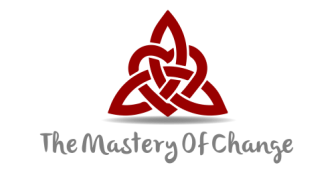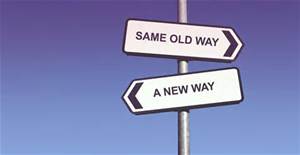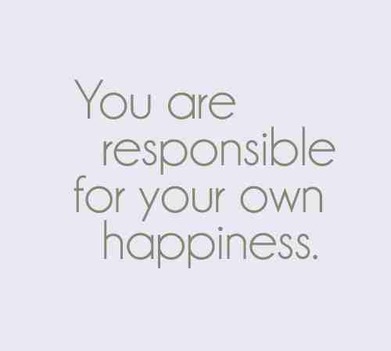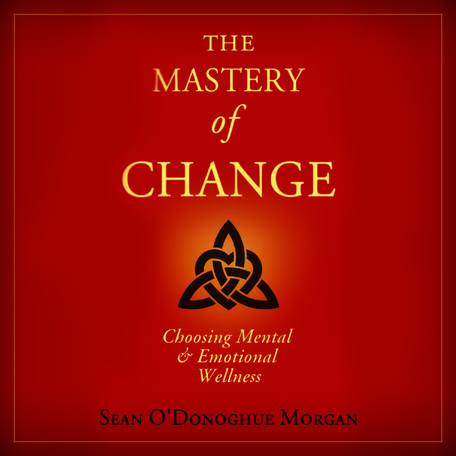What is your financial self-perception?
If an alien from another planet asked you what social class you belong to...how would you answer?
Let’s say you make twenty thousand dollars a year in the United States. You could say that you make well below the median income in your country. Or you could frame it completely differently and say you are in the top third of earners on your planet.
(According to Forbes Magazine, if you make seventy-five thousand a year or more in 2016, you’re in the top ten percent in the world.)
You see, both statements are true. Is your glass half empty or full?
How do you see yourself? Did you know that a company’s stock rarely reflects the value of it’s current assets? That’s right, it usually reflects the projected FUTURE earnings of the company.
So what about you? How do you evaluate your own financial value? Is it according to what is in the bank account now or what you expect in the future?
When you change your perception of yourself, your physical reality reflects the change. So how do you change your perception when you have so many references to your current financial situation staring you in the face? Well, most of your financial beliefs are like an iceberg. You are only aware of some of the thoughts above the surface, but there are a lot more in our unconscious mind.
The key to changing your beliefs is to become aware of them.
You use money every day, so you have constant opportunities to tune into your beliefs about them.
Let’s say that you buy a coffee in the morning. How does it feel in your body when you see the price of the specialty coffee that you really want? What thoughts occur? Make note of them because these are clues to underlying beliefs. How does it feel when you hand over money to someone? Small purchases might reveal some things. How do you feel when you pay for big purchases? How do you feel when you write a big check? When you tune into the feelings and thoughts that occur, then you can work with them.
How do you work with feelings?
Perhaps you will feel a contraction in your body when you’re in a money situation. It could be tightness, an anxious feeling, an angry feeling, or a fearful feeling. Feel where it is located in your body. These feelings aren’t fun. The good thing is that now that you are identifying them, you can change them. Instead of stuffing these feelings down and suppressing them, allow yourself to become aware of them and feel them completely.
You don’t need to refuel them and dwell on them with repetitive thinking. Consciously lean into these feelings and relax into them. Breath through them. Although we’re still learning about how emotions work, it is generally understood that an emotional response only lasts around ninety seconds if it is not refueled by another stimulus such as a negative thought (Jill Bolte-Taylor Ph.D.).
This becomes a life practice and it will save you a lot of suffering because the other option is to suppress emotions. When you suppress emotions, they become stuck in your mind and body, only to cause physical and mental suffering in the future (Check out the work of Dr. Mario Martinez to learn more).
How do I change my thoughts?
When you have a negative thought about a financial situation., notice it. Write it down. Create a journal. This brings more awareness to your belief systems around money. Then it’s time to question the thoughts. Every idea has its opposite. If your current beliefs are not bringing you the feelings and results you want, it’s time to reprogram yourself to believe something different.
There are many ways to question your beliefs. I suggest you give your brain some references as to why the opposite of your negative belief is true.
For example, if you have the thought “I can’t afford what I want” ...you can find examples of things you CAN afford that you want. Or if you have the thought “I don’t make enough money” ...find examples of how you DO make enough money for what you need. If you have the thought “I am broke” ...think of examples of the resources you DO have. If you have the thought “It’s too expensive”...think of examples of why it’s the PERFECT price for that item.
Every belief has its opposite and often it’s even more compelling than the belief that you have been holding onto so tightly. If you’re willing to start entertaining different beliefs and explore what they feel like, you may find that your narrow perceptions start to widen and your physical reality starts to reflect your new positive beliefs.
Now is the time to get excited that you can CREATE your reality by becoming aware of your thoughts and emotions and purposely creating the ones you want through the techniques that you have learned. Now is the time to realize your own abundance and power.
Let me know what you are learning about your unconscious mind through journaling in the comments below.
If an alien from another planet asked you what social class you belong to...how would you answer?
Let’s say you make twenty thousand dollars a year in the United States. You could say that you make well below the median income in your country. Or you could frame it completely differently and say you are in the top third of earners on your planet.
(According to Forbes Magazine, if you make seventy-five thousand a year or more in 2016, you’re in the top ten percent in the world.)
You see, both statements are true. Is your glass half empty or full?
How do you see yourself? Did you know that a company’s stock rarely reflects the value of it’s current assets? That’s right, it usually reflects the projected FUTURE earnings of the company.
So what about you? How do you evaluate your own financial value? Is it according to what is in the bank account now or what you expect in the future?
When you change your perception of yourself, your physical reality reflects the change. So how do you change your perception when you have so many references to your current financial situation staring you in the face? Well, most of your financial beliefs are like an iceberg. You are only aware of some of the thoughts above the surface, but there are a lot more in our unconscious mind.
The key to changing your beliefs is to become aware of them.
You use money every day, so you have constant opportunities to tune into your beliefs about them.
Let’s say that you buy a coffee in the morning. How does it feel in your body when you see the price of the specialty coffee that you really want? What thoughts occur? Make note of them because these are clues to underlying beliefs. How does it feel when you hand over money to someone? Small purchases might reveal some things. How do you feel when you pay for big purchases? How do you feel when you write a big check? When you tune into the feelings and thoughts that occur, then you can work with them.
How do you work with feelings?
Perhaps you will feel a contraction in your body when you’re in a money situation. It could be tightness, an anxious feeling, an angry feeling, or a fearful feeling. Feel where it is located in your body. These feelings aren’t fun. The good thing is that now that you are identifying them, you can change them. Instead of stuffing these feelings down and suppressing them, allow yourself to become aware of them and feel them completely.
You don’t need to refuel them and dwell on them with repetitive thinking. Consciously lean into these feelings and relax into them. Breath through them. Although we’re still learning about how emotions work, it is generally understood that an emotional response only lasts around ninety seconds if it is not refueled by another stimulus such as a negative thought (Jill Bolte-Taylor Ph.D.).
This becomes a life practice and it will save you a lot of suffering because the other option is to suppress emotions. When you suppress emotions, they become stuck in your mind and body, only to cause physical and mental suffering in the future (Check out the work of Dr. Mario Martinez to learn more).
How do I change my thoughts?
When you have a negative thought about a financial situation., notice it. Write it down. Create a journal. This brings more awareness to your belief systems around money. Then it’s time to question the thoughts. Every idea has its opposite. If your current beliefs are not bringing you the feelings and results you want, it’s time to reprogram yourself to believe something different.
There are many ways to question your beliefs. I suggest you give your brain some references as to why the opposite of your negative belief is true.
For example, if you have the thought “I can’t afford what I want” ...you can find examples of things you CAN afford that you want. Or if you have the thought “I don’t make enough money” ...find examples of how you DO make enough money for what you need. If you have the thought “I am broke” ...think of examples of the resources you DO have. If you have the thought “It’s too expensive”...think of examples of why it’s the PERFECT price for that item.
Every belief has its opposite and often it’s even more compelling than the belief that you have been holding onto so tightly. If you’re willing to start entertaining different beliefs and explore what they feel like, you may find that your narrow perceptions start to widen and your physical reality starts to reflect your new positive beliefs.
Now is the time to get excited that you can CREATE your reality by becoming aware of your thoughts and emotions and purposely creating the ones you want through the techniques that you have learned. Now is the time to realize your own abundance and power.
Let me know what you are learning about your unconscious mind through journaling in the comments below.











 RSS Feed
RSS Feed
